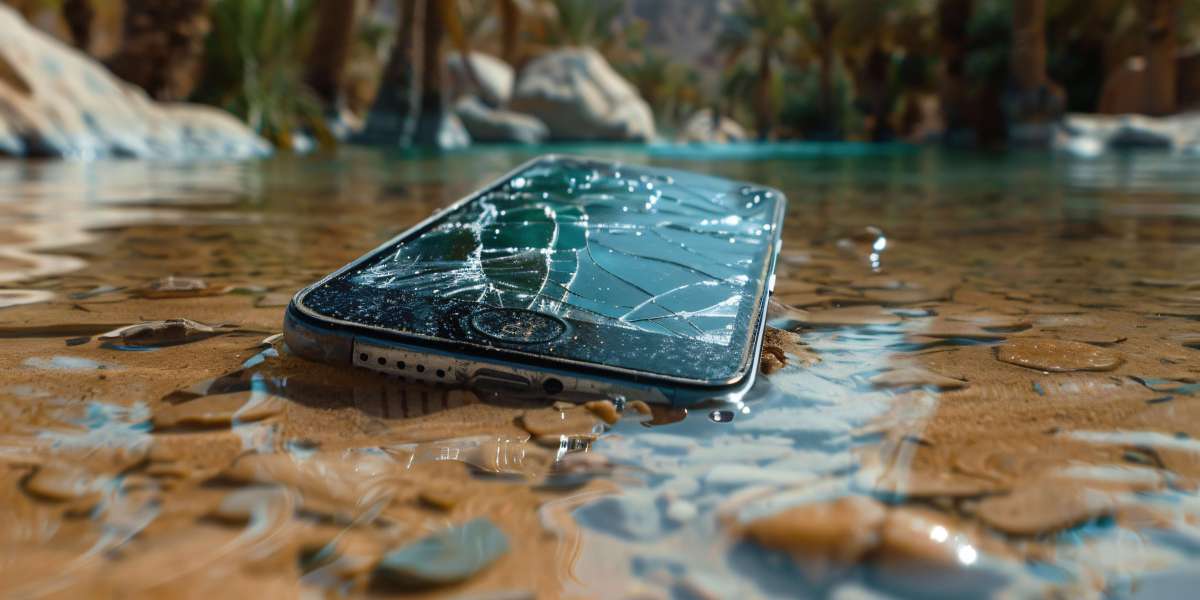Few experiences are more panic-inducing than accidentally spilling liquid on a smartphone, tablet, or laptop. In a split second, your trusted device can go from fully functional to a potential loss, threatening important data and your ability to work or communicate. Water exposure doesn’t just damage electronics immediately; it can lead to long-term corrosion that worsens over time. However, timely, informed action can significantly improve the chances of saving your device.
In this article, we’ll explore emergency fixes that can save your device after water exposure, common mistakes to avoid, and why professional help is often essential. For anyone facing water-related device issues, knowing the right steps can make all the difference.
Why Immediate Action Is Critical
Water and electronics are a dangerous combination. Liquid can cause short circuits within seconds, damaging critical components like the motherboard, battery, and charging circuits. Even if a device appears functional after a spill, hidden damage can continue to deteriorate performance over time.
Some common consequences of water exposure include:
- Electrical short-circuits that permanently damage internal components
- Corrosion forming on connectors, ports, or the motherboard
- Battery malfunctions or a complete power failure
- Data loss from internal storage or memory
Immediate action is crucial. The sooner you respond, the higher the likelihood of saving your device. Professional water damage repairs in Auckland emphasize that speed and precision are key to successful recovery.
Step 1: Power Off Immediately
The first and most critical step after water exposure is to turn off your device. Powering a wet device can cause electrical current to flow through liquid-contaminated circuits, leading to permanent damage.
Emergency tips for shutting down safely:
- Hold down the power button for a forced shutdown if necessary.
- Remove all connected accessories, such as headphones, USB drives, or external keyboards.
- Avoid attempting to charge the device until it has been fully dried and inspected.
Taking these immediate precautions can prevent short circuits, safeguarding both the device and your data.
Step 2: Remove Detachable Components
Once powered down, remove any detachable components to prevent further damage and allow faster drying. Depending on your device, this may include:
- Batteries (if removable)
- SIM cards and memory cards
- External storage devices
- Protective cases or keyboard covers
Removing these parts minimizes trapped moisture and reduces the risk of corrosion spreading through connectors and internal circuits.
Step 3: Dry Your Device Properly
Drying your device correctly is one of the most critical steps after water exposure. Many people make the mistake of using hairdryers, microwaves, or ovens, which can warp components or melt internal wiring. Safe drying methods include:
- Blotting: Use a soft, lint-free cloth to gently absorb surface moisture. Avoid rubbing, as this may push water further into the device.
- Air drying: Place the device in a cool, well-ventilated area, preferably upright so water can drain naturally.
- Avoid the rice myth: Contrary to popular belief, rice does not effectively dry electronics and may leave dust or starch particles inside.
Allow at least 24–48 hours for the device to air dry completely. Patience during this stage is critical; powering the device too soon can worsen the damage.
Step 4: Avoid DIY Repairs on Sensitive Components
It may be tempting to open the device to inspect or clean internal components, but DIY repairs can often exacerbate the problem. Laptops, smartphones, and tablets contain delicate circuitry and tiny components that require professional tools and training.
Common risks of DIY intervention include:
- Voiding warranties
- Causing short circuits
- Damaging sensitive parts like connectors, motherboards, or screens
Professional water damage repair specialists have the experience and tools to disassemble, clean, and restore devices safely. Attempting to do this yourself can make professional recovery more difficult or even impossible.
Step 5: Seek Professional Water Damage Repairs
Even if your device appears to be functioning after drying, hidden corrosion or short-circuits may continue to damage it over time. Professional water damage repairs in Auckland provide comprehensive diagnostics and restoration that go beyond temporary fixes.
Professional technicians can:
- Inspect internal components thoroughly for corrosion or damage
- Clean and decontaminate affected areas using specialized tools
- Replace damaged components like batteries, screens, or motherboards
- Restore devices to full functionality with minimal risk of further damage
Early professional intervention significantly increases the likelihood of full recovery, especially for devices with extensive liquid exposure.
Step 6: Backup and Prevent Future Water Damage
Once your device has been restored, take proactive steps to minimize the risk of future incidents. These measures include:
- Using waterproof cases or sleeves for smartphones, tablets, and laptops
- Keeping liquids away from electronics and creating safe workspace zones
- Regularly backing up important files to cloud storage or external drives
- Educating family members or employees about water hazards near devices
By combining preventive measures with a reliable water damage repair partner, you can protect your devices and data from potential disasters.
Common Myths About Water-Damaged Devices
- Rice Can Save Your Device: Rice is largely ineffective and may introduce dust or starch into your electronics.
- Quick Drying Guarantees Safety: Even if the device powers on, internal corrosion may develop slowly over time.
- DIY Repairs Are Safe: Opening devices without proper tools or training can cause irreversible damage.
Understanding these myths is essential for avoiding costly mistakes and maximizing recovery success.
The Role of Local Expertise
Choosing a trusted water damage repair provider in Auckland is essential for timely and effective restoration. Local expertise ensures:
- Faster turnaround times compared to sending devices overseas
- Access to necessary replacement parts and tools
- Knowledge of common regional issues, such as humidity or local liquid hazards
- Professional guidance on maintenance and future prevention
Local professionals offer not only technical skills but also accountability, ensuring your device is handled carefully and securely.
Conclusion
Water exposure is a common cause of electronic device failure, but it doesn’t always mean the end of your device. Immediate action, proper drying, and professional assistance can often save devices and data from permanent loss. Emergency steps like powering off, removing components, and safe drying are critical first moves, but professional water damage repairs in Auckland services provide the expertise necessary for complete recovery.
Remember: acting fast, avoiding DIY mistakes, and consulting trained professionals can make the difference between restoring your device fully and losing it permanently.
NZ Electronics Repairs specializes in professional water damage repairs for smartphones, laptops, tablets, and other electronics. Their certified technicians provide fast, reliable, and safe restoration services, helping you get your devices back in working order.



